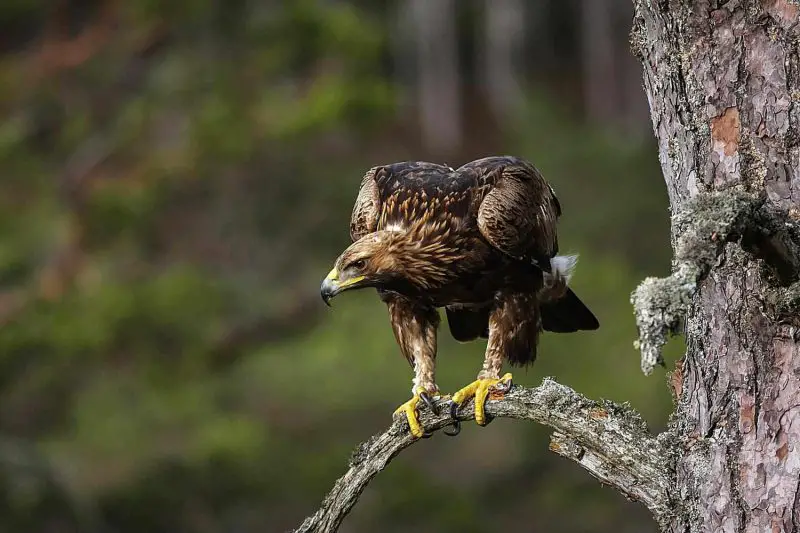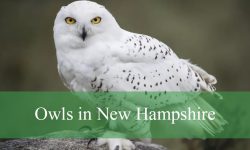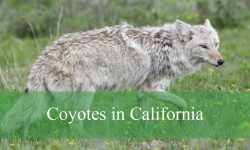North Carolina is home to some of the most majestic and powerful birds of prey in the United States — eagles. These iconic raptors capture the imagination of bird watchers and nature enthusiasts alike. Despite only two primary eagle species being regularly observed in North Carolina, each has distinct features, behaviors, and habitats that make them fascinating subjects to study and appreciate.
In this article, we will explore the Bald Eagle and the Golden Eagle, detailing how to identify them, their behaviors, environments, and some interesting facts you might not know.
Bald Eagle in North Carolina

Appearance and Identification
The Bald Eagle is easily the most recognizable eagle in North America, and it holds a special place as the national bird and symbol of the United States. When you see a Bald Eagle soaring high above the lakes and rivers of North Carolina, its unmistakable white head and tail feathers contrast sharply with its dark brown body and wings, creating a striking silhouette against the sky.
Adult Bald Eagles typically range between 28 to 40 inches in length, with a wingspan that can reach up to 7 feet, making them one of the largest birds in the region. Their sharp, hooked yellow beak is designed perfectly for tearing flesh, and their strong yellow talons help them grasp slippery fish or other prey. Juvenile Bald Eagles, however, are a bit trickier to identify because they lack the white head and tail. Instead, they sport mottled brown and white plumage until they mature at about 4 to 5 years old.
Behavior and Hunting
Bald Eagles in North Carolina are primarily fish eaters, often seen near large bodies of water such as lakes, reservoirs, rivers, and coastal regions. Their hunting technique is as impressive as their size. They soar high, using their excellent eyesight to spot fish swimming near the water surface. When ready, they swoop down, skimming the water with their talons extended to snatch their prey.
Besides fish, Bald Eagles will opportunistically feed on waterfowl, small mammals, and carrion. They are known to be aggressive scavengers and can sometimes steal food from other birds, such as ospreys. Their courtship involves spectacular aerial displays, including impressive dives and talon locking, showcasing their strength and agility.
Habitat and Environment
In North Carolina, Bald Eagles are commonly found near freshwater habitats, including lakes, rivers, swamps, and marshes. They prefer large trees near water for nesting, which provides them with vantage points for hunting and safety for their young. Over recent decades, thanks to conservation efforts and legal protection, Bald Eagle populations in North Carolina have rebounded dramatically.
They build some of the largest nests of any North American bird, called eyries, often reused and added to year after year. These nests can grow to 10 feet wide and weigh several hundred pounds, often found high in tall pines, oaks, or other mature trees.
Fun Facts About Bald Eagles
One remarkable fact about Bald Eagles is their incredible eyesight, which is estimated to be 4 to 8 times sharper than that of humans. This allows them to spot prey from miles away, even while soaring at high altitudes. Another interesting point is that despite their name, Bald Eagles are not bald; the term “bald” is derived from an old English word “piebald,” meaning “white-headed.”
Their powerful talons can exert a grip strength of about 400 psi (pounds per square inch), which is necessary to catch and hold onto slippery fish. During winter months, many Bald Eagles in North Carolina will migrate short distances, moving closer to the coast or southern parts of the state where food sources remain abundant.
Golden Eagle in North Carolina

Appearance and Identification
While far less common than Bald Eagles, Golden Eagles also inhabit parts of North Carolina, primarily the mountainous western regions and during migration seasons. Golden Eagles are somewhat smaller than Bald Eagles but are still imposing birds, measuring around 26 to 40 inches in length with a wingspan of about 6 to 7.5 feet.
Their plumage is a rich dark brown, but what sets them apart is the golden-buff feathers that adorn the back of their heads and necks, giving the species its name. Unlike Bald Eagles, Golden Eagles do not have a white head or tail; instead, their tail is uniformly dark with some faint banding. Their beak is large and hooked, but typically darker than that of Bald Eagles.
Golden Eagles have long, broad wings and a somewhat more slender appearance. Juveniles resemble adults but may show white patches on the wings and tail, which fade as they mature over about five years.
Behavior and Hunting
Golden Eagles are renowned for their hunting prowess. Unlike Bald Eagles that mostly fish, Golden Eagles primarily prey on mammals such as rabbits, squirrels, and even larger animals like young deer or domestic livestock when the opportunity arises. Their hunting style is characterized by high-speed stoops or dives, during which they can reach speeds of over 150 miles per hour.
These eagles are solitary hunters, relying on their incredible speed and powerful talons to capture prey on the ground. Golden Eagles are known for their intelligence and adaptability, often hunting in diverse terrain ranging from open fields to mountainous cliffs.
Unlike Bald Eagles, Golden Eagles tend to be more secretive and avoid human contact. Their vocalizations are softer but include a series of high-pitched whistles and chirps used mainly during the breeding season or territorial disputes.
Habitat and Environment
In North Carolina, Golden Eagles are generally found in the Appalachian Mountains and surrounding highlands, favoring rugged terrain and open spaces with sparse forestation. They prefer nesting on cliffs, rocky outcrops, or large trees that offer wide views of their hunting grounds.
Golden Eagles require large territories due to their hunting style and prey needs, often ranging over many square miles. While rare in the state, their presence is an indicator of healthy ecosystems, especially in more remote mountainous areas.
During the winter, some Golden Eagles migrate south from their northern breeding grounds, passing through or temporarily residing in North Carolina’s western regions before continuing further south.
Fun Facts About Golden Eagles
One of the most fascinating facts about Golden Eagles is their incredible speed and hunting skill. Their dives are among the fastest recorded in the animal kingdom, and they can adjust their flight trajectory mid-air to capture elusive prey.
Golden Eagles have been revered throughout history, often symbolizing power, courage, and freedom in various cultures worldwide. In Native American traditions, Golden Eagle feathers are considered sacred and used in ceremonial regalia.
Unlike Bald Eagles, Golden Eagles have a more muscular and aggressive nature, sometimes even challenging larger predators for territory or food. Their wingspan and strength make them capable of carrying off prey heavier than themselves, a testament to their raw power.
Conclusion
North Carolina’s skies are graced by two spectacular eagle species, each with unique traits that define their place in the ecosystem. The Bald Eagle, with its unmistakable white head and association with American symbolism, is a frequent and beloved sight near the state’s waterways. Meanwhile, the Golden Eagle remains a more elusive and rare visitor, mainly found in the state’s rugged mountainous areas and during seasonal migrations.
Both species serve as vital indicators of environmental health, thriving where clean water and open spaces abound. Whether you are an avid bird watcher, a nature lover, or simply curious, understanding the differences and appreciating the majesty of these eagles adds a new dimension to exploring North Carolina’s natural heritage.
If you get the chance to witness these incredible birds soaring overhead or nesting in towering trees or cliffs, take a moment to admire their power, beauty, and the crucial role they play in maintaining balance in the wild.
FAQs About Eagles in North Carolina
What are the two main types of eagles found in North Carolina?
The two primary eagle species in North Carolina are the Bald Eagle and the Golden Eagle. Bald Eagles are more common and often seen near lakes and rivers, while Golden Eagles are rarer and mostly found in the mountainous western part of the state or during migration.
How can I identify a Bald Eagle?
Bald Eagles have a distinctive white head and tail with a dark brown body and wings. They are large birds with a wingspan of up to 7 feet. Juveniles do not have the white head until they mature around 4 to 5 years old.
Where do Bald Eagles typically live in North Carolina?
Bald Eagles prefer habitats near freshwater sources such as lakes, rivers, swamps, and coastal areas. They build large nests high in mature trees close to water bodies to hunt fish and other prey.
What does a Golden Eagle look like?
Golden Eagles are dark brown with golden feathers on the back of their heads and necks. They lack the white head and tail of Bald Eagles. Their wings are broad and long, and they have a powerful, hooked beak.
Are Golden Eagles common in North Carolina?
Golden Eagles are relatively rare in North Carolina. They are mostly found in the western mountainous regions during migration or winter. Their habitat includes rugged terrain with open spaces and cliffs for nesting.
What do Bald Eagles eat?
Bald Eagles primarily feed on fish but will also hunt birds, small mammals, and scavenge carrion. They are skilled hunters who swoop down to catch fish near the water surface.
What is the hunting style of Golden Eagles?
Golden Eagles hunt mainly small to medium-sized mammals using high-speed dives and powerful talons. They are solitary hunters and can take down prey heavier than themselves.
When do Bald Eagles and Golden Eagles breed in North Carolina?
Bald Eagles typically breed from January through April, building large nests and performing courtship flights. Golden Eagles breed in late winter to early spring, mostly in mountainous areas.
Are Bald Eagles protected in North Carolina?
Yes, Bald Eagles are protected under federal laws such as the Bald and Golden Eagle Protection Act and the Migratory Bird Treaty Act. Conservation efforts have helped their populations recover significantly.
Can I see eagles year-round in North Carolina?
Bald Eagles can be seen year-round in many parts of North Carolina, especially near water. Golden Eagles are more seasonal visitors, mostly observed during migration in fall and winter months.






